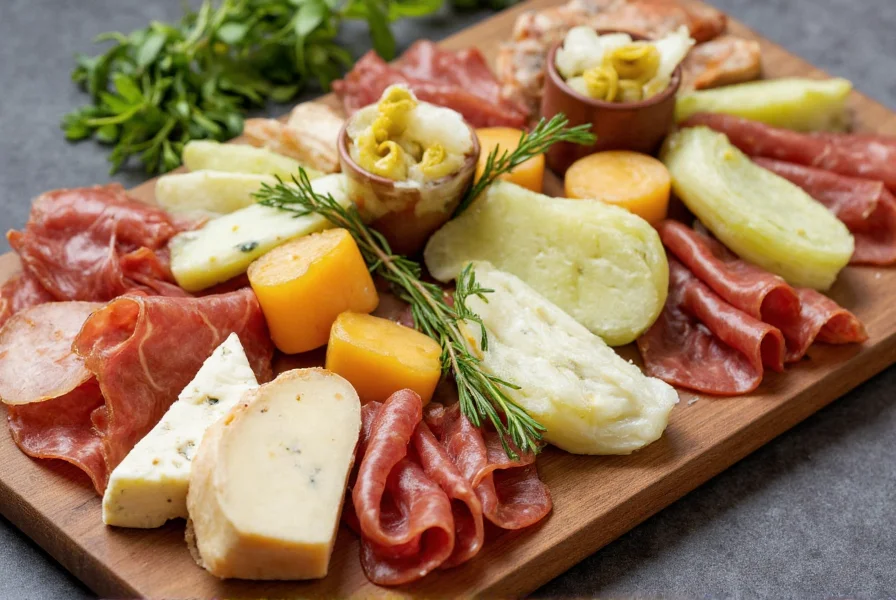Pickled fennel has become a staple in modern pantries for good reason. This vibrant preservation technique transforms the mild licorice notes of fresh fennel into a bright, acidic accent that elevates countless dishes. Unlike many pickled vegetables that lose their texture, properly prepared pickled fennel maintains an appealing crunch that provides textural contrast in composed dishes.
The Science Behind Perfect Pickled Fennel
The magic of pickling fennel happens through acidification. When fennel slices steep in a vinegar solution typically containing 5-6% acidity, the pH drops below 4.6, creating an environment where harmful bacteria cannot survive. This chemical transformation preserves the vegetable while subtly altering its flavor compounds. The natural sugars in fennel interact with the vinegar's acetic acid, creating new flavor molecules that give pickled fennel its distinctive sweet-tangy profile.

Traditional Pickled Fennel Recipe
Creating exceptional pickled fennel at home requires attention to ratios and timing. The following method yields consistently crisp results:
| Ingredient | Measurement | Purpose |
|---|---|---|
| Fennel bulbs | 2 medium | Main ingredient, sliced 1/8 inch thick |
| Distilled white vinegar | 1 cup | Acid base for preservation |
| Water | 1 cup | Dilutes vinegar strength |
| Granulated sugar | 3 tablespoons | Counters acidity, enhances flavor |
| Kosher salt | 1 tablespoon | Flavor enhancer, texture preserver |
| Black peppercorns | 1 teaspoon | Aromatic complexity |
| Coriander seeds | 1/2 teaspoon | Complements fennel's natural notes |
Step-by-Step Preparation
- Prepare fennel by trimming stalks and fronds, removing tough outer layers, and slicing bulbs paper-thin using a mandoline
- Create brine by combining vinegar, water, sugar, salt, and spices in a saucepan
- Bring mixture to a rolling boil, then immediately remove from heat
- Pack fennel slices into sterilized jars, leaving 1/2 inch headspace
- Pour hot brine over fennel, ensuring complete submersion
- Cool to room temperature, then refrigerate for at least 48 hours before use
Flavor Development Timeline
Understanding how pickled fennel evolves over time helps you use it at its peak:
- 48 hours: Initial tanginess develops while maintaining pronounced fresh fennel flavor
- 1 week: Optimal balance of vinegar acidity and fennel's natural sweetness emerges
- 2-3 weeks: Complex flavor integration occurs as spices fully infuse the fennel
- 6 weeks: Maximum flavor development, though texture begins gradually softening
Culinary Applications for Pickled Fennel
This versatile ingredient shines across multiple culinary contexts. When exploring how to use pickled fennel in Mediterranean cuisine, consider these applications:
- Salad component: Toss with arugula, orange segments, and toasted almonds for a refreshing side
- Sandwich enhancement: Layer on banh mi or grilled vegetable sandwiches for bright acidity
- Seafood pairing: Serve alongside grilled fish or ceviche to complement delicate flavors
- Cheese board accent: Arrange with aged cheeses, olives, and crusty bread
- Pasta integration: Toss with lemon zest, olive oil, and fresh herbs for quick summer pasta

Nutritional Profile and Health Benefits
While pickling alters some nutritional elements, health benefits of pickled fennel remain significant. The fermentation process preserves many of fennel's natural compounds while adding probiotic elements. A 1/4 cup serving typically contains:
- 15 calories
- 3g carbohydrates
- 1g dietary fiber
- Substantial vitamin C (10% of daily value)
- Notable potassium content
- Antioxidants including anethole and limonene
The acetic acid in the vinegar base may support digestive health and help moderate blood sugar responses when consumed as part of a balanced meal. Unlike many preserved foods, homemade pickled fennel storage tips don't require added preservatives when properly prepared and refrigerated.
Storage Guidelines and Shelf Life
Proper storage ensures your pickled fennel recipe with vinegar maintains quality and safety:
- Always store in airtight containers in the refrigerator
- Ensure fennel remains fully submerged in brine at all times
- Consume within 3-4 weeks for optimal texture and flavor
- Discard if brine becomes cloudy or develops off odors
- Use clean utensils when serving to prevent contamination
Common Variations to Explore
Culinary creativity with how to make pickled fennel at home yields exciting variations:
- Sweet variation: Add 1 sliced pear to the brine for subtle fruitiness
- Spicy version: Include 1-2 dried red chilies for heat
- Herb-infused: Add fresh dill or tarragon sprigs during pickling
- Citrus twist: Substitute 1/4 cup vinegar with fresh lemon juice
- Golden turmeric: Add 1/2 teaspoon turmeric for color and earthiness
Troubleshooting Common Issues
Even experienced preservers encounter challenges with what does pickled fennel taste like when techniques need adjustment:
- Mushy texture: Caused by overcooking brine or using undersized fennel bulbs
- Excessive sourness: Reduce vinegar ratio to 3:1 water-to-vinegar in future batches
- Bland flavor: Increase spice quantities or extend pickling time
- Cloudy brine: Usually harmless sediment from spices, but discard if accompanied by off smells
- Insufficient crunch: Add 1/4 teaspoon calcium chloride to brine for firmness











 浙公网安备
33010002000092号
浙公网安备
33010002000092号 浙B2-20120091-4
浙B2-20120091-4